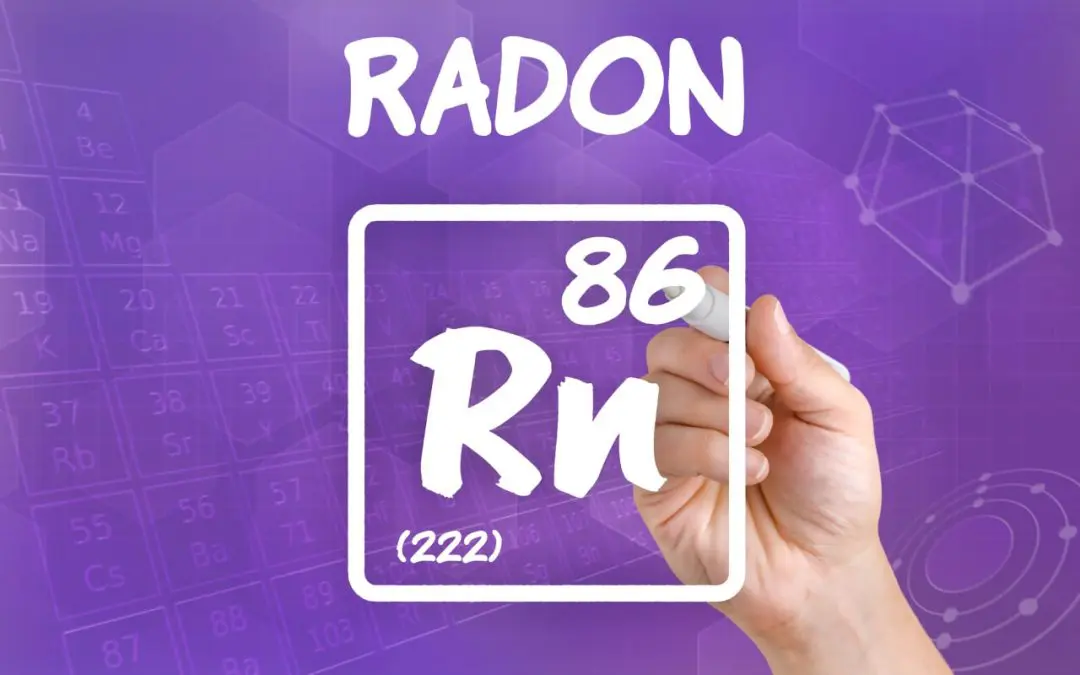As a homeowner, you focus on protecting your property from visible threats like storms, leaks, and pests. But what about the invisible ones? Radon is a colorless, odorless, naturally occurring radioactive gas that could accumulate in any home. It affects indoor air quality and poses a serious long-term health risk. It’s the second leading cause of lung cancer in the United States, second only to smoking. The good news is that this risk is entirely manageable through simple radon testing and, if necessary, effective mitigation.
Understanding the Risk: Why Radon Testing is Crucial
Radon comes from the natural decay of uranium found in nearly all soils. As uranium breaks down, it creates radon gas, which rises from the ground and enters your home through cracks in the foundation, gaps around service pipes, floor drains, and other openings. Because your house acts like a vacuum, drawing air (and radon) from the soil beneath, the gas becomes trapped inside, potentially building up to dangerous levels.
Radon levels vary widely from house to house, even between neighbors. The only way to know the level in your property is through radon testing. This isn’t a problem unique to old homes or certain regions; radon could be found anywhere, making radon testing a non-negotiable step for any conscientious homeowner.
Professional Radon Testing
Getting an accurate and reliable reading is simple when you rely on professional services. There are two primary types of radon tests. Short-term radon testing provides a quick snapshot of radon levels, typically over a period of 48 to 96 hours. This method is most commonly used during a real estate transaction when time is a factor. If a short-term test result is high, the EPA recommends confirming it with a second test or, ideally, a long-term test to get a more accurate annual average.
Long-term testing is performed for more than 90 days. This provides the most reliable measure of your home’s average radon level because it accounts for daily and seasonal fluctuations. For homeowners not in a hurry, a long-term test gives the most dependable data upon which to base a mitigation decision. A qualified professional ensures the testing device is placed correctly in the lowest lived-in level of your home, away from drafts and following strict protocols, guaranteeing results that accurately reflect the concentration of radon gas.
Taking Action: Professional Radon Mitigation Systems
If your radon testing reveals higher levels, the next step is to install a mitigation system. The goal of radon mitigation is straightforward: to reduce the amount of radon gas entering your home and vent it safely outside. This is not a do-it-yourself project; it requires the expertise of certified professionals.
The most common and effective technique is Sub-Slab Depressurization (SSD). This system works by creating a negative pressure field beneath your home’s foundation to prevent the radon from entering the house in the first place. SSD is highly effective, often reducing radon levels by 90% or more. The system is a permanent fix to a serious health hazard. Once mitigation is complete, the professional will always perform follow-up radon testing to guarantee the system is working effectively and the levels have dropped below the EPA’s action threshold.
Selecting a Qualified Radon Mitigation Professional
Because radon mitigation involves dealing with the structure and ventilation of your home, it’s critical to hire a qualified contractor. A qualified mitigation contractor will perform a diagnostic test to determine the best approach for your specific home’s construction, whether that is a standard SSD system, a drain tile suction system, or another specialized technique. They will provide a detailed contract outlining the guaranteed level of radon reduction and will ensure all necessary venting meets local codes. Investing in a professional mitigation system offers true peace of mind that your family is protected from this silent threat.
Frequently Asked Questions (FAQs)
How much does professional radon testing cost?
Professional radon testing is a very affordable service, typically costing less than $200. This is a small price to pay for the peace of mind regarding your family’s health.
If my neighbor has low radon, does mine automatically too?
No. Radon levels are highly dependent on the unique geological structure directly beneath your house and the specific construction of your foundation. A home one lot over may have drastically different levels, making individual radon testing necessary for every property.
Should I test for radon even if I don’t have a basement?
Yes. Radon could enter any home, regardless of whether it has a basement, crawlspace, or slab-on-grade foundation. Radon testing should always be done on the lowest level of the home that is used or occupied.
How long does a radon mitigation system last?
The system itself—particularly the piping—is durable and could last the lifetime of the house. The active component is the fan, which typically lasts around 5 to 10 years and is easily replaced by a professional when it wears out. Ongoing monitoring with occasional radon testing is recommended to guarantee the system remains effective.
Anderson Home Inspections offers radon testing and home inspection services in Central Ohio. Contact us to schedule our services.

